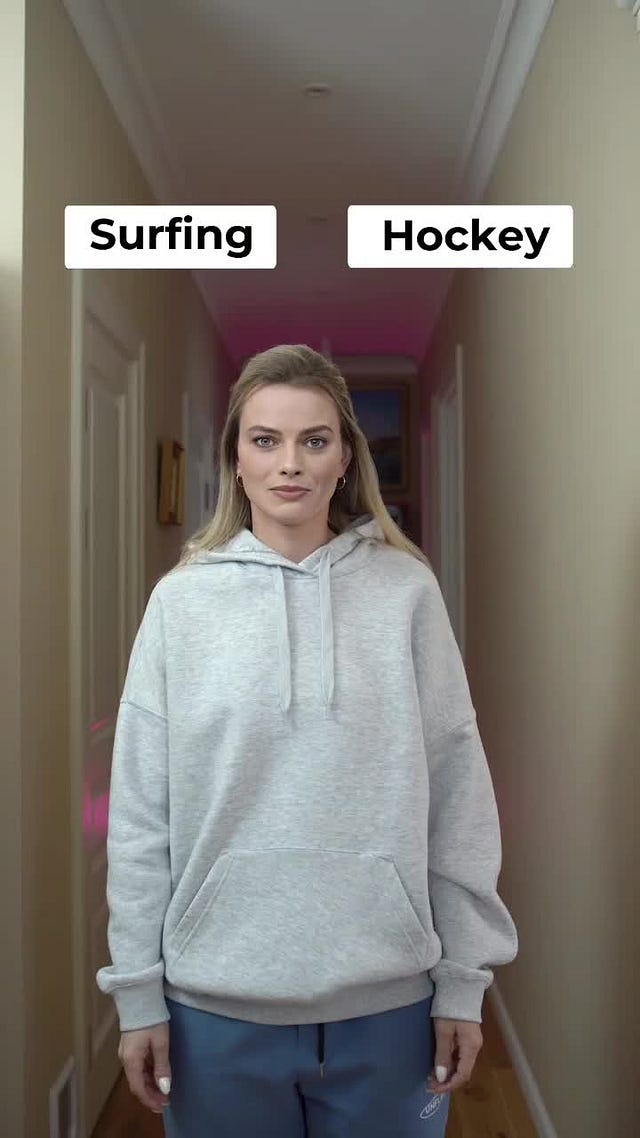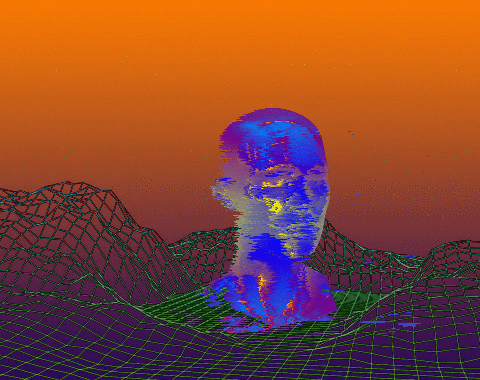New Week #89
OpenAI's neural network teaches itself how to play Minecraft. MIT researchers say giant space bubbles could solve the climate crisis. Plus more news and analysis from this week.
Welcome to the mid-week update from New World Same Humans, a newsletter on trends, technology, and society by David Mattin.
If you’re reading this and haven’t yet subscribed, join 22,000+ curious souls on a journey to build a better future 🚀🔮
To Begin
This week, OpenAI find a novel use for all those Minecraft videos on YouTube.
Also, a climate tech startup breaks ground on a major new carbon capture plant in Iceland. And European politicians are fooled by a deepfake of Kyiv mayor Vitali Klitschko.
Let’s go!
🤖 In the first-person
This week, a glimpse at a powerful — and potentially highly consequential — new AI training technique.
Research lab OpenAI announced that they trained a neural network to play Minecraft. And they did it with video.
First the researchers trained the AI on a tiny subset of labelled Minecraft gameplay videos, in which the actions onscreen are accompanied by data on the keyboard inputs associated with those actions. After that, they fed the AI a further 70,000 hours of unlabelled video.

Once the training was complete OpenAI’s neural net was able to perform a wide range of in-game skills, including building huts, chopping wood, and hunting animals. Essentially, it reached the standard of a capable human player.
All of this is exciting for my eight-year-old sons, who would love to be allowed to watch 70,000 hours of Minecraft video. But why does it matter for us?
⚡ NWSH Take: This is about tapping the vast information resource that is online video. Pick pretty much any task — bake a cake, build a website — and there will be a YouTube video of someone doing it. Imagine if all that unstructured video data can become an AI training tool. // The deeper implication here? I write often on the quest for helper robots than can perform everyday chores. If we can harness the training power of unstructured video, that could help advance us towards robots that can navigate household environments and perform complex, unstructured tasks such as making a cup of coffee, or loading the dishwasher. // OpenAI aren’t the only ones working on all this. Meta researchers are using smart glasses to record first-person POV video of everyday activities; a few weeks back it released a tranche of those videos. The idea is that they can be used to train AI to better manage everyday environments and tasks. // The TL;DR? We thought we were creating all those ‘how to’ videos to teach each other. It turns out that their real impact may reside in their impact on the machine intelligence emerging around us.
🔥 Cool it
Also this week, technologists race to halt global heating.
Climate tech startup Climeworks say they’ve broken ground on a major new carbon capture plant in Iceland. It will capture and store around 36,000 metric tonnes of carbon each year once it is complete in 2024; a smaller Climeworks plant in Iceland already captures 4,000 tonnes per year.
Meanwhile, researchers at MIT suggested an even more radical solution. They propose putting a ‘Brazil-sized swarm’ of reflective bubbles between the Earth and the sun, to reflect a small fraction of the sunlight streaming towards our planet. Reflecting just 1.8% of that light would, they say, halt global heating.
The researchers say these space bubbles are far safer than typical geoengineering solutions. They could be constructed in space, and are ‘fully reversible’. Which means, I suppose, that they can be popped.
⚡ NWSH Take: The quest for knock-out blow geoengineering solutions to global heating is intensifying. Last year I wrote about a planned experiment — eventually cancelled — that would have seen Harvard researchers shoot reflective chalk dust high into the Earth’s atmosphere. Now, add space bubbles to the growing list of ideas. // The broader issue here remains as I outlined it back then. Does the answer to climate change really lie with more technology? Or does that idea only provide a false sense of security that will prevent us from making the changes that are really needed: transition to clean energy, rewiring the economy, maybe even degrowth? // That is a hugely complex question. But my feelings on it are increasingly influenced by the belief that — however much you and I would like it to be otherwise — we’re simply not going to get our act together in time to limit heating to 1.5C. If we want a sub 1.5C world, geoengineering technologies will have to form part of the answer. Carbon capture is interesting; but we pump out 36 billion metric tonnes of carbon per year. Seen from that perspective, space bubbles — built off-Earth and ‘fully reversible’ — may be one of the more realistic, and less risky, geoengineering answers available.
🎭 Rolling in the deep
Three glimpses, this week, of our shared deepfake future.
Mayors of several major European cities, including Vienna and Madrid, reportedly conducted video calls with a deepfake of Kyiv mayor Vitali Klitschko. The mayor of Berlin, Franziska Giffey, apparently spoke to the impersonator for 15 minutes before becoming suspicious and ending the call. The Ukrainian embassy later confirmed that she had not been speaking to the real Klitschko.
Also, the FBI reports that people are using deepfake and voicefake technologies during video call interviews for remote jobs. The scammers are stealing profile pictures from social media, and using them as a basis for their live video deepfakes; they’re hoping to be hired and then gain access to sensitive company information.
Meanwhile, this deepfake Margot Robbie account continues to take TikTok by storm. Many users commenting on the account’s posts clearly believe that the account is authentic. That’s even despite the giveaway name: unreal_margot.
 Tiktok failed to load.
Tiktok failed to load.Enable 3rd party cookies or use another browser
⚡ NWSH Take: We all know that deepfakes are coming. But we’re yet to reckon with their dark potential to throw fundamental aspects of our collective lives into chaos. If we can’t know when our favourite film star or singer is being faked — and if our leaders can’t know when the mayor of a city at war is being faked — then pretty soon we find ourselves an a dizzying hall of mirrors. Think beyond Hollywood and to, say, Putin’s propaganda war in Ukraine, and the implications are horrifying. // What to do? Clearly we can’t leave it to individuals to sniff out even an obvious deepfake; see the Margot Robbie account. So it’s hard to see a first best solution, here, that isn’t grounded in legislation. The EU recently told Big Tech platforms that they must take action on deepfakes or face massive fines. The US Senate have established the Deepfake Task Force Act, which establishes a team charged with developing new strategies. // Legislation alone, though, won’t win the war. Medium-term, we need new technologies. Adobe CEO Shantanu Narayen recently said content provenance authentication is the central challenge for the internet today. Expect that idea to go mainstream soon. We need a content authentication moonshot. Our democracies may depend on it.
🗓️ Also this week
🛰 A NASA lunar satellite sent back images of the crater made when a mystery rocket impacted the Moon earlier this year. The origins of the rocket are still unknown, but it’s believed to be a piece of the Chinese CZ-3B rocket launched in 2014.
🌱 Scientists at the University of Delaware found a way to grow plants in complete darkness. The method uses an ‘electrocatalytic process’ to convert carbon dioxide, electricity, and water into acetate, which the plants then consume to fuel their growth. The researchers say this method could enable us to grow food in non-traditional environments, including in space.
👀 The CEO of AR contact lens maker Mojo Vision says he wore functional smart lenses in his eyes for an hour. I wrote about Mojo and their quest for an AR breakthrough back in New World #76.
🐔 Researchers say AI could help protect the welfare of farmed chickens by listening out for their distress cries. The technology correctly distinguished distress calls with 97% accuracy according to scientists at the City University of Hong Kong
🔍 Amazon is planning to surveil shoppers in its physical stores and share the data with advertisers. The retail giant says the new Store Analytics technologies will offer brands ‘data-driven insights about the performance of their products, promotions, and ad campaigns’.
💪 Researchers at ETH Zurich have developed ‘wearable muscles’ that can increase the strength and endurance of people with limited mobility. The Myoshirt is a soft, wearable fabric exomuscle shirt embedded with a motor and sensors; it amplifies the physical movements of the person wearing it.
🔌 The Dutch power grid is struggling to meet rising demand from electric vehicles. Grid operator Stedin says the government must invest heavily in smart charging technologies, which see EVs charge only when other demands on the grid are low.
👨🚀 A new study warns that space tourism is set to damage the ozone layer and contribute to spiralling global temperatures. Scientists at the Cooperative Institute for Research in Environmental Science say rocket launches cause the release of particularly harmful black carbon, or soot, which absorbs sunlight and retains heat.
🌍 Humans of Earth
Key metrics to help you keep track of Project Human.
🙋 Global population: 7,957,480,196
🌊 Earths currently needed: 1.8123782437
💉 Global population vaccinated: 60.9%
🗓️ 2022 progress bar: 50% complete
📖 On this day: On 30 June 1905 Albert Einstein sends his paper ‘On the Electrodynamics of Moving Bodies’ for publication in the Annalen der Physik; the paper introduces Einstein’s theory of special relativity.
Creative Mode
Thanks for reading this week.
The emergence of machine intelligence, and our ongoing quest to harness it, will help shape the decades ahead.
This newsletter will keep watching, and thinking about what it all means for our shared future. There’s one thing you can do to help: share!
If this week’s instalment resonated with you, why not forward the email to someone who’d also enjoy it? Or share it across one of your social networks, with a note on why you found it valuable. All you have to do is hit the button below. Remember: the larger and more diverse the NWSH community becomes, the better for all of us.
I’ll be back next week. Until then, be well,
David.
P.S Huge thanks to Nikki Ritmeijer for the illustration at the top of this email. And to Monique van Dusseldorp for additional research and analysis.






